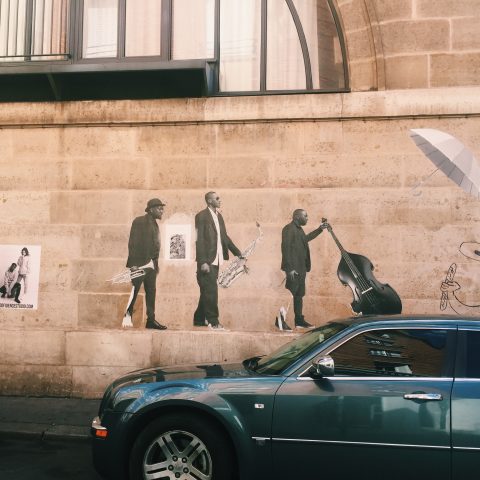At noon on October 11th, a hearing was held at New York City Hall to discuss the proposed rezoning of Manhattan’s East Harlem. The widely controversial plan, which calls for the upzoning of a 96 square block of the neighborhood also known as El Barrio, makes way for an astonishing 122,000 square feet for new restaurants and stores, 275,000 square feet of new industrial and office space, as well as 3,500 new apartment units. Despite ongoing backlash from El Barrio residents who fear that an remodeling of the working class, historically Latino neighborhood would displace longtime residents and destroy the character of the community, the plan was approved by the City Planning Commission nine days before the hearing.
Naturally, gaggles of protesters waited outside the gates of City Hall prior to the event, many holding signs with slogans like “East Harlem is Not For Sale!” and “Mayor De Blasio, What’s in Your Wallet?” Protesters from groups like the Community Voices Heard (CVH) and the People’s Congress of Resistance made the rounds handing out literature detailing their opposition to the plan. One particularly striking piece featured the headline “TIME TO FIGHT BACK! Federal gov’t lets Puerto Rico starve – NYC gov’t drives Boricuas, poor people out of El Barrio with ‘rezoning’ plan.”
A common sentiment amongst the protesters was an aversion to an influx of luxury developments in the area. To quote the leaflet from the Justice Center en El Barrio, “the entire character of the neighborhood will be transformed by middle-class and luxury apartments. The notion that new ‘market-rate’ construction will lower rents has been disproven by the experience of Williamsburg, the Lower East Side and Central Harlem. Working-class communities are being destroyed!”
After a few minutes of chants like “Hey hey! Ho ho! Racist rezoning has got to go!”, protesters were reluctantly escorted in by NYPD officers through a metal detector and up City Hall’s storied pavilion. After being told that they could not bring their anti-rezoning posters inside the building, they were then told that there was not enough space for them on the first floor, and were promptly moved to the balcony.
What proceeded was a dry, nearly robotic testimony from a five-person panel who voted in favor of the East Harlem rezoning. Consisting of three representatives from the Department of City Planning and two representatives from the Department of Housing Preservation and Development, the “in favor” panel extolled the various virtues of the project in drab, monotonous tones. Common among their claims was the idea that East Harlem, as it is, has a lack of protected affordable housing, and that the best way to ensure this amenity in its future was to outsource the construction of affordable housing to developers.
One of the biggest supposed victories of the De Blasio administration has been the implementation of MIH, or Mandatory Inclusionary Housing. Approved by the City Council in March of 2016, MIH stipulates that developers building more than 10 units, or more than 12,500 square feet of floor area “in certain rezoned parts of the city” are required to reserve a certain percent of units for people making either a certain percentage of the New York City Area Median Income.
The deep problem with this calculation is that the AMI incorporates incomes from all of New York City, as well as northern suburban counties like Westchester, Rockland, and Putnam — each of which have deeply wealthy pockets. Thusly, when the city is attempting to create affordable housing for its poorest districts, such as East New York, the incomes of people in Scarsdale and the Upper East Side are accounted for when finding the median, skewing the data in favor of the wealthy. As a result, the Area Median Income being used to price “affordable” housing in El Barrio, where the median income for a family of three is $33,500, comes out to a staggering $85,900.
As Mayor De Blasio and his Deputy Mayor for Housing and Economic Development Alicia Glen would argue, 20% of the new units would be reserved for families making as little as $25,770 a year, or 30% of the Area Median Income. Despite this, there is a very palpable sense of fear among neighborhoods like East Harlem that the Mayor’s plan is a wolf in sheep’s clothing — presenting a small sliver of questionable affordability in return for a tall, luxe makeover of their community. This fear, and the subsequent disapproval of the plans, were shown in full force at the Rezoning Hearing.
As one of the Department of Planning employees droned on about the “sensitive” and “rational” zoning changes, three activists abruptly stood up and shouted “EL BARRIO IS NOT FOR SALE!” before dropping a list of 2000 signatures they had acquired in opposition to the rezoning plan. Quickly, much of the second floor began chanting along, making it known to the prim and proper committee that their community was not a lab rat for the city’s experiments. As the hearing’s speaker attempted to quiet them down, their chants only got louder, complete with stomping and clapping.
Eventually City Hall security escorted each of us out. As the ejected protesters made their way down the building’s grand steps, there was a sense of momentary victory. “I can’t believe they let us chant that for so long!” one said to another who nodded enthusiastically in agreement. Though the city may very well carry on with their plans, they will do so in full awareness of the sharp, passionate objections to it by the people of El Barrio.

